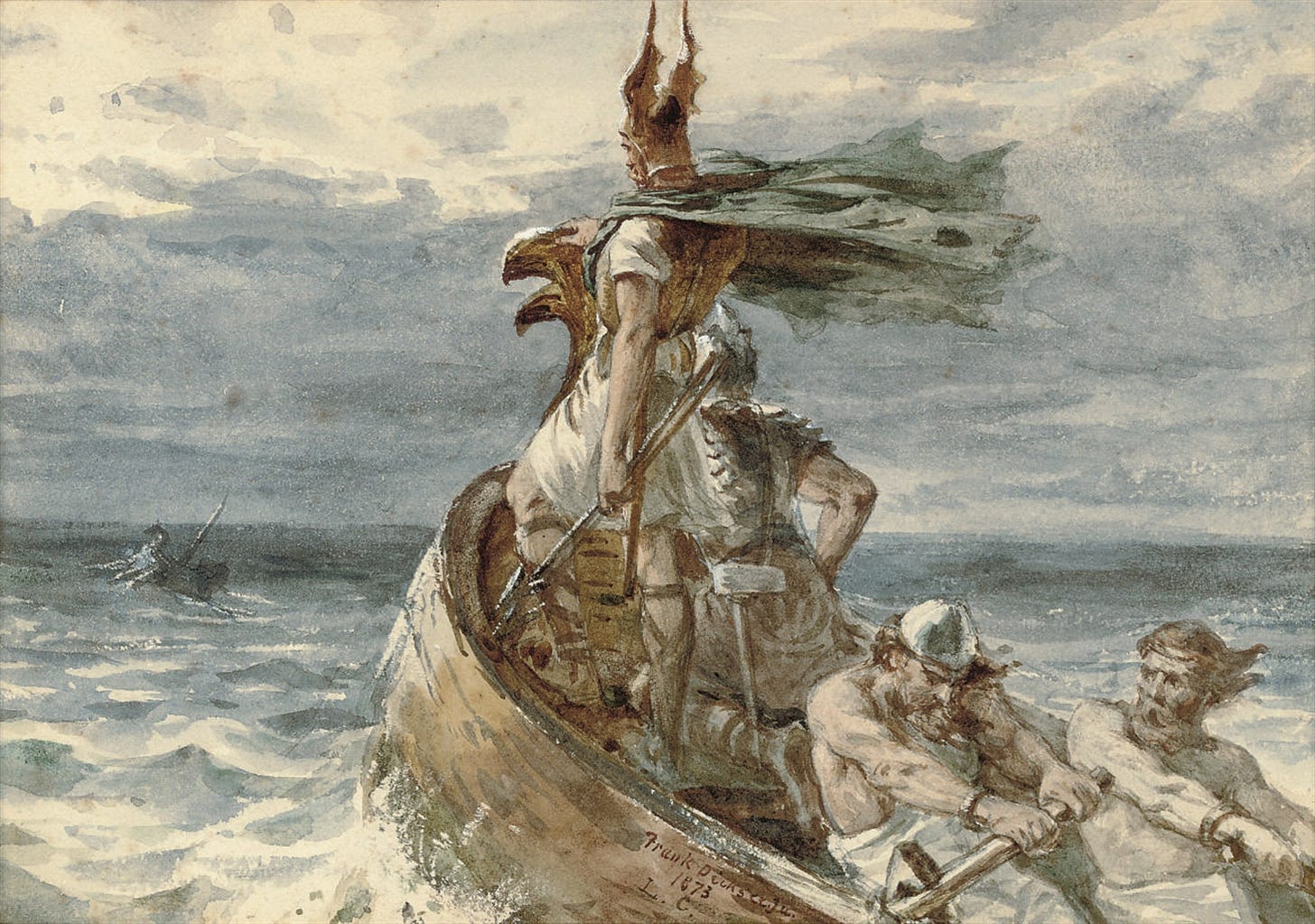Welcome to
. The following is part of our Paris series. For the full map of Cosmographia posts, see here.In our story of Paris so far, we’ve seen the initial Gaulish settlement of Lucotocia burned to the ground, the Roman replacement, Lutetia, become an important trading post, and the Franks making the burgeoning town politically significant by choosing it as their burial place. In 900 years, Paris had come a long way from the Parisii’s first tower, and so had the country surrounding it.
As Clovis I and his successors expanded their control over the former Roman province of Gaul, the area came to be known by the latin word, Francia — Land of the Franks.1 With steady military victories in Burgundy, Aquitaine, and Swabia, Francia grew and grew.

Towards the middle of the 8th century, the Frankish Empire transitioned from the Merovingian to the Carolingian dynasties. Usurping can be a tricky business, and a new dynasty needs legitimacy. The first Carolingian king, the unfortunately-named Pepin the Short, achieved this legitimacy via the Pope, who anointed him King of the Franks at the Basilica of Saint-Denis in Paris, after the little man had forced the previous king into a monastery. Upon his death Pepin was interred in Paris, like the Merovingian monarchs that had gone before him. Usurping aside, he would probably have gone down in history as a great king, all things considered, if he had not been so eclipsed by his son — the greatest of all the Frankish kings.
Charlemagne —meaning Charles the Great— is a totemic figure in European history. Renowned for his military campaigns, patronage of the arts and knowledge, and the unification of Western Europe (his Empire is second in size only to the Roman Empire in European history), Charlemagne has often been called Pater Europae - Father of Europe.2
“"When you behold the harvests in the fields
Shaking with fear, the Po and the Ticino
Lashing the city walls with iron waves,
Then may you know that Charlemagne is come.
And even as he spake, in the northwest,
Lo! there uprose a black and threatening cloud,
Out of whose bosom flashed the light of arms
Upon the people pent up in the city;
A light more terrible than any darkness;
And Charlemagne appeared;--a Man of Iron!”— Henry Wadsworth Longfellow, excerpt from Charlemagne (1863)
With such an illustrious ruler on the throne, we’d be forgiven for expecting Paris to enter a golden age around this time, right? Wrong. Sadly, Charlemagne’s ascendency marks the beginning of a period where the city’s fortune takes a turn for the worse.

Up until then, the Frankish kings had never had a fixed capital. Their court rotated among prominent towns and cities — though Paris alone had the special honour of being the royal burial place. Charlemagne broke with tradition and made Aachen (in modern Germany) his permanent capital, where he built the rather wonderful Palatine Chapel.3 Paris still had a reasonable population at this time —perhaps as many as 20,000– but it lost much of its political significance, and very few notable buildings were built in this period. Indeed, compared to the glittering metropolises of the Byzantine or Arab empires, almost all Carolingian cities were considerably undeveloped. Northern France, and Paris with it, was a bit of a backwater.
Upon Charlemagne’s death in 814, he was entombed in Aachen, and, as is the way with many of history’s strongmen, his empire soon fell into war and chaos as competing factions fought for supremacy. This lack of stability and security opened the door to a new threat. One that came up the river.





